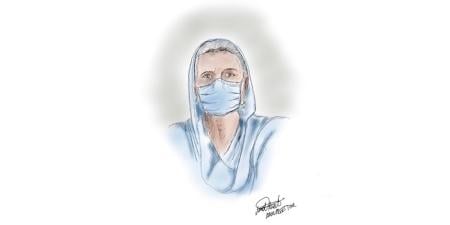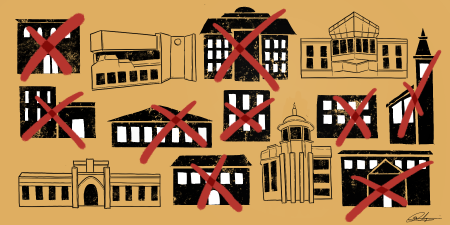Abstract
Medical school education must better align with patient care needs for a rapidly changing population. One challenge is to eliminate bias in merit-based admissions to more equitably review candidates with the structural competency skills desperately needed to promote public health and health equity. Aligning merit-based admissions approaches with holistic admissions approaches and equitable candidate evaluation will simultaneously support learners and improve patient care.
Structural Competency as Merit
We must acknowledge that our systems of educating clinicians and providing care to patients are not equitable.1,2,3,4,5,6 Meritocracy in its current form excludes the skill sets of many. We can reimagine merit more inclusively, however. Reconceiving medical education to better align with patient care needs for a rapidly changing population requires reconceiving meritocracy—from admission through clinical training completion—in a way that emphasizes equity. One way to motivate equity in merit-based admissions is to frame structural competency as a source of merit in a candidate.
Viewing Candidates Holistically
Currently, meritocratic criteria in medical school admissions include grades and standardized test results, which are often presumed to be free from bias though they favor candidates with social power. For example, racial bias has been demonstrated in clerkship grading, the Medical Student Performance Evaluation, and Alpha Omega Alpha membership.1,2,3,4 Scholarly article publication, mission trip participation, and clinical shadowing are more often an index of the experience of candidates for whom social power has been part of their backgrounds.5
According to the Association of American Medical Colleges (AAMC), medical school admissions processes should incorporate holistic review of all applicants.7 Holistic review is a selection process that considers a candidate’s experiences, attributes, and academic metrics equally.7 Admissions holism is intended to level admissions processes, which disadvantage candidates from backgrounds underrepresented in medicine (UIM)8 by overemphasizing grade-point average (GPA) and Medical College Admission Test® (MCAT) scores9 that inadequately account for inequity in educational opportunity. UIM applicants are more likely to have attended high-poverty schools,10 less likely to have had credentialed math and science teachers,11 and less likely to have had programs and courses that prepare them well for undergraduate education.12,13 Additionally, although a wide range of MCAT scores predict success in medical school, schools are less likely to accept individuals with lower test scores.14,15
Programs must carefully consider and establish what a merit should be before using merits as criteria for assessing applicants’ promise.
Admissions holism seeks to contextualize applicants’ backgrounds and life experiences—especially their experiences with stereotyping, which can cause harm16 and affect academic performance.17,18 An equitable admissions process is one that values applicants’ ability to understand how social, cultural, and political structures confer advantage to some and disadvantage to others. In addition, understanding the structures that place one at a disadvantage expresses a knowledge base or competency in how structures produce and reproduce power; this competency should be regarded as a unique, valuable, hard-earned merit.
What Should Count as Merit?
High GPAs and MCAT scores are merits, but they’re not the only merits, and they don’t reliably identify the most capable students or most facile clinical problem solvers.19 As technology advances, abundant information becomes readily available, clinical knowledge bases grow seemingly exponentially, and rote memorization of content diminishes in practicability and applicability.20,21 Recognizing that the volume of content memorized does not make a clinician more responsive to patient needs in real time, some credentialing bodies have begun replacing lengthy, infrequent, high-stakes board step examinations with more frequent, shorter, practice-based assessments.22 An applicant’s facility with collaboration, conscientious approach to problem solving, and grit might be traits more reliably indicative of undergraduate medical, residency, or professional success than MCAT scores.23,24
In practice, good patient-centered care requires skills in advocacy, service, and mentorship. The lived experiences of many UIM and first-generation matriculants can be sources of invaluable strength that enable their connection with diverse colleagues and patients, which is key to motivating equitable patient outcomes.25,26 The upshot here is that programs must carefully consider and establish what a merit should be before using merits as criteria for assessing applicants’ promise to fulfill schools’ missions, practice settings’ demands, and patients’ needs.
Teaching, Learning, and Assessing Structural Competency
Success in promoting health equity via health care workforce diversity will require more than medical school admissions committee members’ careful thought about what should count as merit. It will also require health professions educators’ careful redesign of preclinical curricula. The preclinical content taught in the first 2 years is now condensed to 1.5 years or less in a growing number of schools27,28 and traditionally focuses on features of human illness and injury that are “measurable, physiological deviations from normal, healthy functioning.”29 Basic and biomedical science content must be well taught and mastered by students looking to excel on the United States Medical Licensing Examination® (USMLE) Step 1. Although the USMLE will soon be pass-fail,30 this shift is just one part of a full acknowledgment that much of what is taught preclinically is not directly relevant to clinical care30,31 and that medical education curricula should more effectively equip clinicians to promote equity.
Helena Hansen and Jonathan Metzl developed structural competency as a framework for reequiping medical education curricula to better recognize and address the social determinants of health.32 Metzl and Hansen argue that structural competency can equip clinicians to address stigma and respond to health inequity.20 Structural competency requires learners to recognize medicine as situated among social structures (eg, mass incarceration, racist housing policy and urban planning, and educational and socioeconomic inequity) that determine patients’ and communities’ health status and health outcomes. Structural competency also requires learners to articulate a patient’s or community’s illness and injury susceptibility and recovery likelihood in terms of their place in an overall context and structure (eg, historical, social, cultural, political, and economic).20
Thinking Structurally
A structurally competent learner recognizes that living in an area with limited food access compromises one’s capacity to control diabetes and tailors treatment and referrals accordingly rather than attributing poor health outcomes solely to an individual’s health behaviors, such as poor nutrition or not being physically active. Innovations in assessing learners’ abilities to think structurally about diagnosis and intervention, how to engage patients, and how to respond with care to patients’ needs as situated in broader, health-determining structures will be key to reconceiving structural competence as a cornerstone of health professions curricular reform and as a merit to be valued in health professional school admissions. Such innovation can happen over time in longitudinal didactics, small group learning, community health experiences, simulated patient encounters, feedback sessions, and examinations. Students can prepare to take care of marginalized patients and populations whose health status and access to care is disproportionately undermined by structural health determinants. Curricular focus on bias, cultural humility, and public health can help complete integration of structural competency into health professions education33 and motivate a richer, more inclusive conception of merit among those who decide who our future caregivers will be.
References
- Boatright D, Ross D, O’Connor P, Moore E, Nunez-Smith M. Racial disparities in medical student membership in the Alpha Omega Alpha Honor Society. JAMA Intern Med. 2017;177(5):659-665.
- Edmond MB, Deschenes JL, Eckler M, Wenzel RP. Racial bias in using USMLE Step 1 scores to grant internal medicine residency interviews. Acad Med. 2001;76(12):1253-1256.
-
Ross DA, Boatright D, Nunez-Smith M, Jordan A, Chekroud A, Moore EZ. Differences in words used to describe racial and gender groups in medical student performance evaluations. PLoS One. 2017;12(8):e0181659.
- Wijesekera TP, Kim M, Moore EZ, Sorenson O, Ross DA. All other things being equal: exploring racial and gender disparities in medical school honor society induction. Acad Med. 2019;94(4):562-569.
- Hadinger MA. Underrepresented minorities in medical school admissions: a qualitative study. Teach Learn Med. 2017;29(1):31-41.
-
Smedley BD, Stith AY, Nelson AR, eds; Institute of Medicine. Unequal Treatment: Confronting Racial and Ethnic Disparities in Health Care. National Academies Press; 2003.
-
Association of American Medical Colleges. Holistic review. Accessed October 14, 2020. https://www.aamc.org/services/member-capacity-building/holistic-review
- Lucey CR, Saguil A. The consequences of structural racism on MCAT scores and medical school admissions: the past is prologue. Acad Med. 2020;95(3):351-356.
-
Association of American Medical Colleges. Using MCAT® data in 2021 medical student selection. 2020. Accessed June 18, 2020. https://www.aamc.org/media/18901/download
-
Orfield G, Lee C. Why segregation matters: poverty and educational inequality. Civil Rights Project. January 2005. Accessed June 18, 2020. https://civilrightsproject.ucla.edu/research/k-12-education/integration-and-diversity/why-segregation-matters-poverty-and-educational-inequality/orfield-why-segregation-matters-2005.pdf
- Monk DH, Haller EJ. Predictors of high school academic course offerings: the role of school size. Am Educ Res J. 1993;30(1):3-21.
-
Oakes J, Ormseth T, Bell R, Camp P. Multiplying Inequalities: The Effects of Race, Social Class, and Tracking on Opportunities to Learn Mathematics and Science. RAND Corporation; 1990. https://www.rand.org/content/dam/rand/pubs/reports/2006/R3928.pdf
- Rodriguez A, McGuire KM. More classes, more access? Understanding the effects of course offerings on Black-White gaps in Advanced Placement course-taking. Rev High Ed. 2019;42(2):641-679.
- Capers Q IV, Clinchot D, McDougle L, Greenwald AG. Implicit racial bias in medical school admissions. Acad Med. 2017;92(3):365-369.
- Davidson RC, Lewis EL. Affirmative action and other special consideration admissions at the University of California, Davis, School of Medicine. JAMA. 1997;278(14):1153-1158.
-
Markovits D. The Meritocracy Trap: How America’s Foundational Myth Feeds Inequality, Dismantles the Middle Class, and Devours the Elite. Penguin Press; 2019.
- Low D, Pollack SW, Liao ZC, et al. Racial/ethnic disparities in clinical grading in medical school. Teach Learn Med. 2019;31(5):487-496.
-
Yeates P, Woolf K, Benbow E, Davies B, Boohan M, Eva K. A randomised trial of the influence of racial stereotype bias on examiners’ scores, feedback and recollections in undergraduate clinical exams. BMC Med. 2017;15:179.
- Razack S, Risor T, Hodges B, Steinert Y. Beyond the cultural myth of medical meritocracy. Med Educ. 2020;54(1):46-53.
-
Metzl JM, Hansen H. Structural competency: theorizing a new medical engagement with stigma and inequality. Soc Sci Med. 2014;103:126-133.
- Metzl JM, Roberts DE. Structural competency meets structural racism: race, politics, and the structure of medical knowledge. Virtual Mentor. 2014;16(9):674-690.
-
How do I remain certified? American Board of Family Medicine. Accessed June 18, 2020. https://www.theabfm.org/continue-certification/how-do-i-remain-certified
- Lievens F, Ones DS, Dilchert S. Personality scale validities increase throughout medical school. J Appl Psychol. 2009;94(6):1514-1535.
- Duckworth AL, Peterson C, Matthews MD, Kelly DR. Grit: perseverance and passion for long-term goals. J Pers Soc Psychol. 2007;92(6):1087-1101.
- Saha S, Guiton G, Wimmers PF, Wilkerson L. Student body racial and ethnic composition and diversity-related outcomes in US medical schools. JAMA. 2008;300(10):1135-1145.
-
Laveist TA, Nuru-Jeter A. Is doctor-patient race concordance associated with greater satisfaction with care? J Health Soc Behav. 2002;43(3):296-306.
-
Weeks of instruction and contact hours required at US medical schools. Association of American Medical Colleges. Accessed June 18, 2020. https://www.aamc.org/data-reports/curriculum-reports/interactive-data/weeks-instruction-and-contact-hours-required-us-medical-schools
-
Weiner S. Med school in 3 years: is this the future of medical education? Association of American Medical Colleges. March 29, 2019. Accessed June 18, 2020. https://www.aamc.org/news-insights/med-school-3-years-future-medical-education
-
Strickland CM, Patrick CJ. Biomedical model. In: The Encyclopedia of Clinical Psychology. John Wiley & Sons; 2015.
-
Change to pass/fail score reporting for Step 1. United States Medical Licensing Examination®. Accessed June 18, 2020. https://www.usmle.org/incus/
-
United States Medical Licensing Examination®. Step 1: Content description and general information. Updated March 1, 2019. Accessed June 18, 2020. https://www.usmle.org/pdfs/step-1/content_step1.pdf
-
Hansen H, Metzl JM, eds. Structural Competency in Mental Health and Medicine: A Case-Based Approach to Treating the Social Determinants of Health. Springer Nature Switzerland; 2019.
- Doobay-Persaud A, Adler MD, Bartell TR, et al. Teaching the social determinants of health in undergraduate medical education: a scoping review. J Gen Intern Med. 2019;34(5):720-730.



